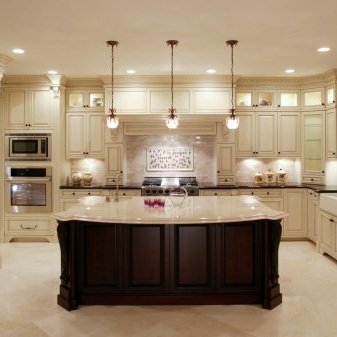The 5 Best Kitchen Lighting Tips
Poorly lit kitchens look dull and unwelcoming. Proper lighting using modern and stylish fixtures creates the right atmosphere to entertain friends and family and puts less strain on the eyes while cooking or doing other essential tasks. While renovating the existing kitchen or designing the kitchen of a new home, choosing the correct light fixtures and knowing how to effectively light up the kitchen to enhance its aesthetic and practical appeal is an essential step.
Here are a few kitchen lighting ideas and tips to transform the space and create a well-lit kitchen with the perfect ambiance to maximize its potential:
Create a lighting plan
Unlike traditional kitchens, modern kitchens are more than a place to prepare food. Keep the kitchen lighting design flexible enough to accommodate the different needs of these multi-functional spaces. The best kitchen light design offers a seamless transition with multiple layers for proper optimization and control to create a dynamic space.
Functional task lighting
Task lighting is a vital part of every kitchen. They light up the cooking, cleaning, and food preparation areas. It lights up the primary work areas in the kitchen like countertops, islands, cabinetry, sink, and stove to keep them illuminated for easy identification of ingredients, safe meal preparations, and other tasks. Correct placement of task lighting is crucial to avoid shadows and enhance kitchen functionality and safety. Popular task light options include:
Recessed spotlights for ceiling and over-island.
Strip LEDs for under-cabinet lighting and cupboards.
Puck lights for countertops.
Add sufficient ambient light
Ambient lights add to the kitchen’s overall atmosphere. It is combined with natural light or provides an alternate lighting option for kitchens with less or no natural light. Examples of ambient lights include spotlights, downlights, recessed lights, pendants, flush mounts, chandeliers, and track lights. Homeowners can use them in combination for a beautiful and functional kitchen environment.
Carefully incorporate them in the lighting plan for general kitchen lighting to create a well-balanced and visually appealing design plus task and accent lights. Decorative lighting options like pendants and chandeliers can illuminate the island unit or the dining area for a warm atmosphere.
Use accent lights
A well-designed kitchen lighting is incomplete without accent lights. Use these as an additional light option for a functionally well-lit kitchen. Use these to accentuate architectural or design elements, create visual interest, and contribute to the overall kitchen atmosphere. Use cabinet lights, toe kick lights, bar lights, strip lights, wall sconces, track lights, or other lights that highlight the kitchen elements or create a warm glow.
Do not forget natural light
Artificial lights are essential to creating a well-lit kitchen, but homeowners should never undermine the importance of natural light. Lack of proper daylight can make the kitchen environment dull. Sufficient natural light will eliminate the need for artificial electric light during the daytime. Consider a small window or a skylight to bring in as much natural light as possible in the kitchen.
Create the perfect kitchen
A well-lit kitchen is a combination of these lights placed correctly. Always choose the appropriate fixture size and use dimmers for better control, set the mood, and save on electricity bills. Contact an electric company to safely and correctly install kitchen lighting.
Zimmerman Electric is a reliable residential and commercial electrician in Redondo Beach, CA. Our residential services include general electric services, electrical remodeling, circuit breaker repair, electric panel installations, electrical repair & testing, electrical wiring & outlets, emergency electrician, home lighting, and TV installation services. We are licensed, bonded, insured, and highly-rated. Call us today.

